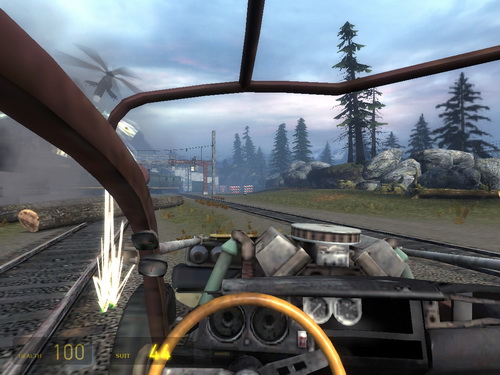- Qualcomm Launches Snapdragon 4 Gen 2 Mobile Platform
- AMD Launches Ryzen PRO 7000 Series Mobile & Desktop Platform
- Intel Launches Sleek Single-Slot Arc Pro A60 Workstation Graphics Card
- NVIDIA Announces Latest Ada Lovelace Additions: GeForce RTX 4060 Ti & RTX 4060
- Maxon Redshift With AMD Radeon GPU Rendering Support Now Available
ASUS P-Series AMD 690G Barebone PC

What if you could build a sub-$500 HTPC that was slim, fast, and capable, without the headache of picking bargain-barrel parts to accomplish your design goals? What if it had HDMI and 7.1 audio? With the help of their Pundit series, ASUS hopes to make barebones relevant again. Have they done it?
Page 9 – Gaming: Company of Heroes; Half-Life 2: Episode Two
If there’s an application that you’re particularly unlikely to use the ASUS P2-M2A690G barebone system for, it’s gaming. Still, the fact remains that PC games are among the most effective of hardware tests, because they stress all major subsystems of the PC simultaneously. If any link in the hardware chain is particularly weak, gaming performance will suffer. In the case of the P2-M2A690G barebone, the weakest link is likely to be the integrated Radeon X1250 graphics processor, which AMD says is equivalent to half of an AMD Radeon X700 GPU core.
THQ Company of Heroes
THQ’s popular World War II real-time strategy game Company of Heroes is an excellent example of a demanding DirectX 9 title. Since the 690G isn’t DX10 compliant (though its successor, the 780G, is), it made no sense to include any DirectX 10 titles in our tests.
Company of Heroes features a built-in graphics benchmark that tests the GPU’s performance through the game’s opening cinematic sequence, giving maximum, minimum, and average frame rates. For the settings used through these tests, see the settings matrix on the Testing Methodology page of this article. We collect average and minimum framerate data, since minimum frame rates help give an impression of how ‘choppy’ gameplay will seem to be.

Though it lacks support for Shader Model 3.0, the Radeon X1250 pulled out a huge lead here, thanks to its higher clock frequency and superior graphics horsepower. The aging GeForce 6150 chipset put the reference machine at a distinct disadvantage, though neither chipset really achieved a ‘playable’ result by our definition (that is, a minimum frame rate greater than 24 fps, the frame rate of broadcast TV.)
Valve Half-Life 2: Episode Two
For real-world game testing, we turn to Valve’s Half-Life 2: Episode Two, which has long been a standard for our game benchmarking. With Episode Two, Valve delivers more of what fans loved about the original Half-Life 2, as well as a few twists, including a level where players pilot a cobbled-together dune buggy through an obstacle course. Driving may seem like a strange addition to what is typically considered a first-person shooter, but the “Riding Shotgun” level we’re using in this testing combines fast-moving scenery with complex AI, which is a perfect test for the capabilities of more modest hardware.

For our testing, we begin by loading the level from the console and initiating the benchmarking run in FRAPS 2.9.4, which is used to collect frame rate data during the test. The vehicle begins the level in exactly the same spot, and follows a well-defined path through the obstacle course to its finish. For detailed information about the settings used in testing, see the screen shots of the ‘settings’ screens on the Testing Methodology page of this article. Again, average and minimum frame rate data is collected, as well as frametime data which is translated to frame-by-frame frame rate data and plotted vs. time below.

Even in this simpler test that’s intended to be a lighter load on less-capable internal graphics chipsets, the older 690G and GeForce 6150 struggled mightily through the test, with the GeForce 6150 failing to deliver double-digit frame rates altogether. Neither of these results fit our definition of ‘playable’ for gaming, at least as far as Half-Life 2 is concerned. However, much less demanding games like World of Warcraft should be playable, with the quality settings suitably reduced. Antialiasing on either of these chipsets remains a pipe dream.
Now that we’ve seen how the ASUS P2-M2A690G barebone performs under light-duty gaming usage, let’s take a look at the system’s audio performance, as well as a brief treatment of the chassis’ thermal performance and noise characteristics.
Support our efforts! With ad revenue at an all-time low for written websites, we're relying more than ever on reader support to help us continue putting so much effort into this type of content. You can support us by becoming a Patron, or by using our Amazon shopping affiliate links listed through our articles. Thanks for your support!





